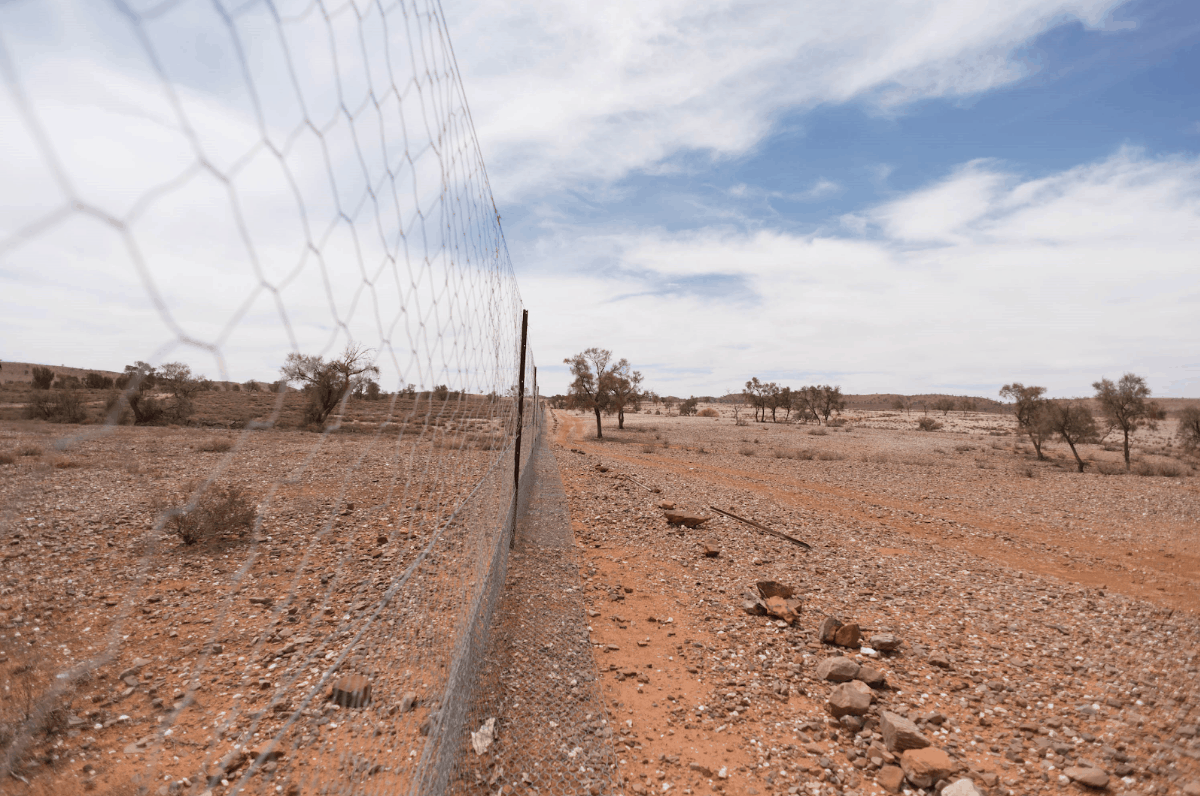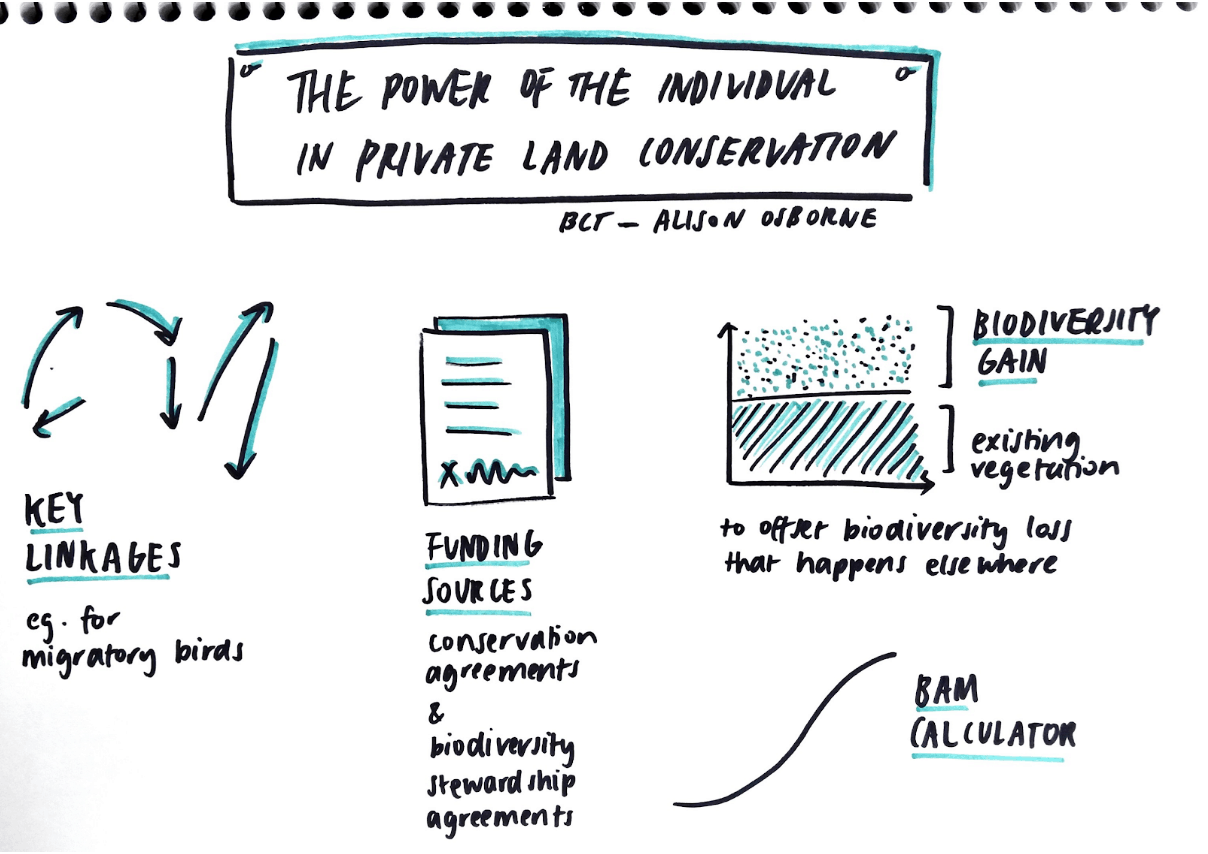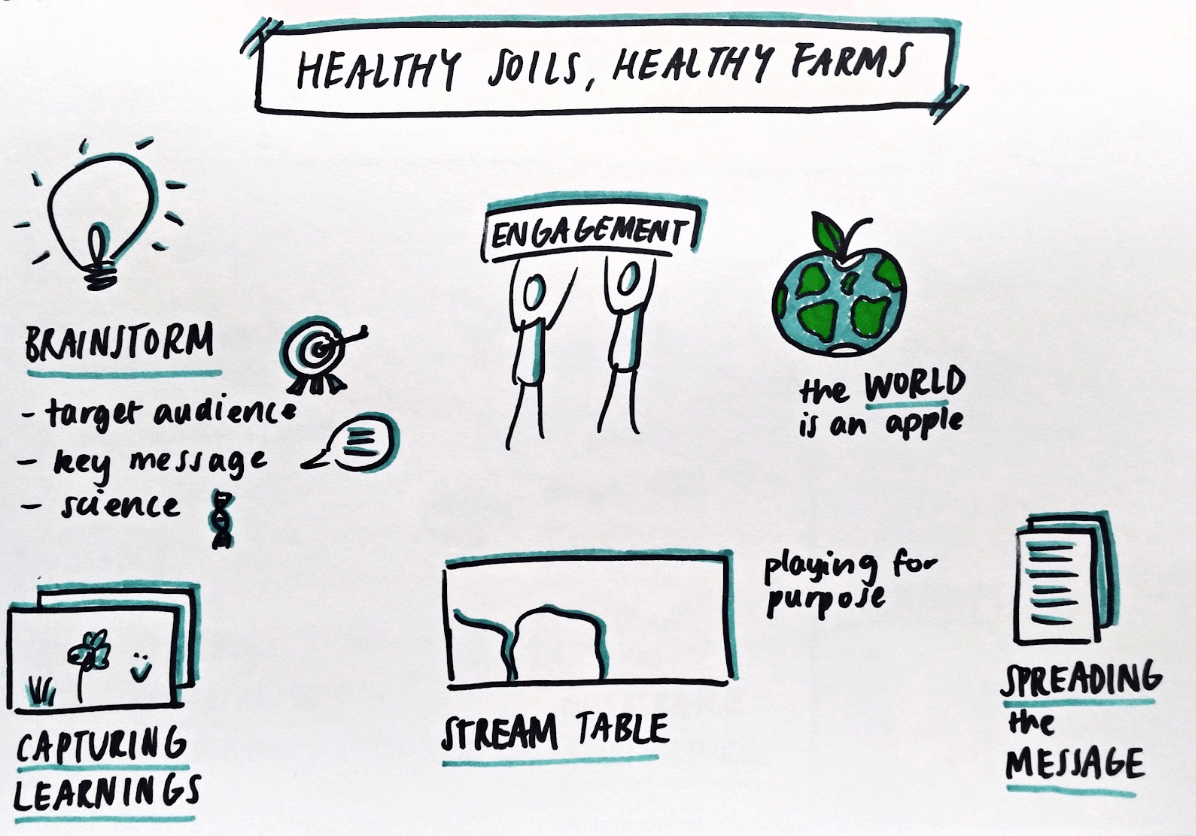
words by Jodie Hui
A few weeks ago, I was fortunate enough to attend the NSW Landcare Conference out at Broken Hill. What an adventure it was! From an afternoon learning about exclusion fencing at Fowler’s Gap, to panel discussions and presentations about different Landcare initiatives across the state, I came away with a notebook full of learnings and new ideas.

Throughout my time in the Silver City, I was encouraged to consider how we might work together to conserve biodiversity on private land. Considering 42% of NSW is managed by DPIE, that leaves the responsibilities of the other 58% to private owners. After attending a range of lightning talks, and chatting with other attendees, I came up with four key areas influencing biodiversity conservation on private land.
1. Learning from successful engagements
One key way to improve biodiversity on private land is to leverage learnings and materials from successful projects. Reusing tried and tested project blueprints is a surefire way to save time and resources, while setting your next project up for success.

In addition to reusing project blueprints, there’s a lot to be gained from sharing knowledge between industries. For example, the sketchnote below outlines recent innovations in the NSW Oyster Industry. Although we might not all be working with oysters on a daily basis, we can still leverage the ideas, solutions and learnings, and apply them to our own respective industries.

2. Leveraging funding schemes
Money makes the world go round. Haven’t we all heard that one before? Well, it’s no different in the case of private landholders. By raising awareness of the various funding schemes available, we are able to educate private landholders on the different options they have. This financial reward and/or assistance may help in motivating private landholders to take action to conserve biodiversity on their properties.

3. Encouraging citizen science
Citizen science is a huge player in raising awareness of biodiversity conservation issues and importance. By encouraging citizen science through apps such as FrogID, or bug blitz events (see sketchnote below), we are putting biodiversity in the forefront of the public eye. By having members of the general public participate in biodiversity initiatives, awareness of conservation on private land will improve, especially if people are conducting the blitz activities on their own properties.

4. Empowering future generations
Finally, we can encourage biodiversity conservation on private land, by empowering future generations to take the lead on sustainability issues and initiatives. It is critical to invest in educating our future generations, so they are equipped with the knowledge and skills to tackle conservation issues for years to come. Different generations may also have new ideas and approaches to existing problems, bringing a fresh perspective to the table.

If you’d like to see the rest of my sketchnotes from the conference, or learn more about any of the specific topics I mentioned, feel free to drop me a line. Thanks again to Intrepid Landcare and the NSW Biodiversity Conservation Trust for the opportunity to attend. It’s been an invaluable experience in the Far West.
about this project…
The NSW Biodiversity Conservation Trust (BCT) worked in collaboration with Intrepid Landcare to support five young Landcarers from across NSW to attend the NSW Landcare and Local Land Services Conference in Broken Hill in October 2019. These are the stories and insights of these young people, what they got out of the conference and what they see as possible when it comes to conserving biodiversity on private property.

